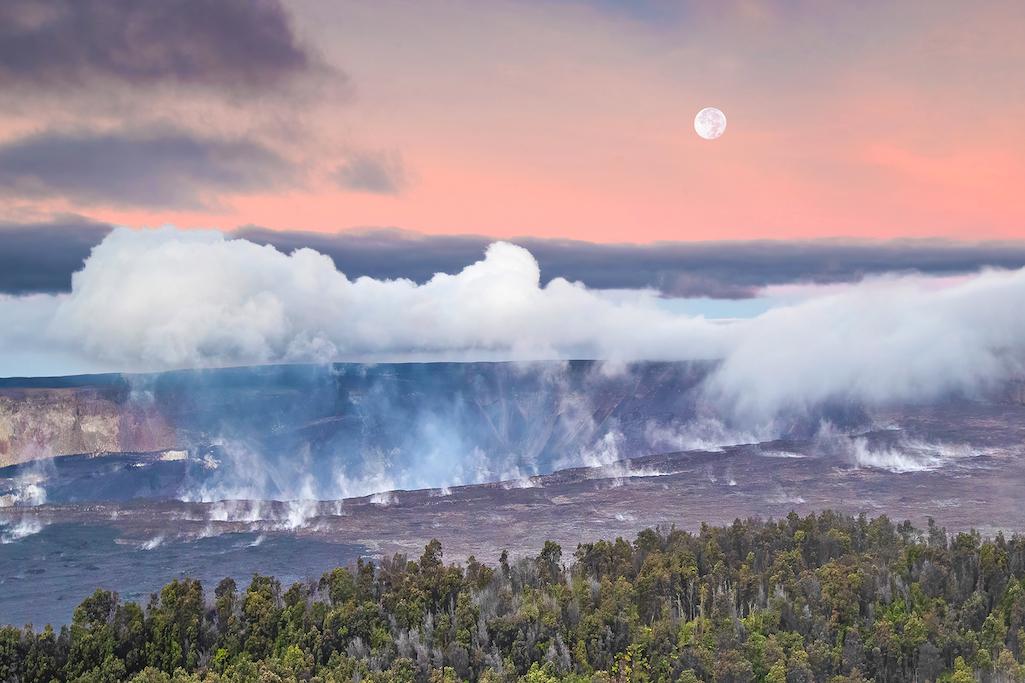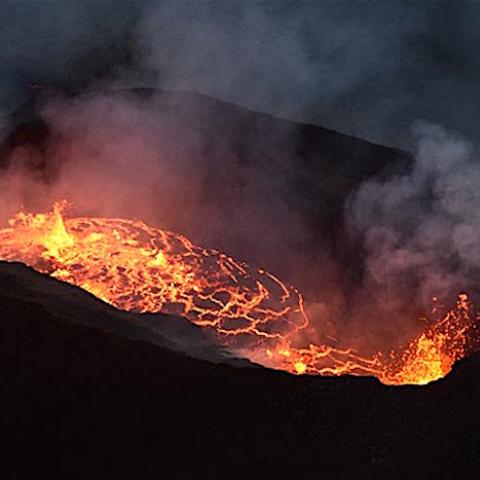
The Halema‘uma‘u Crater at Hawai'i Volcanoes National Park/NPS, Janice Wei
What to do with facilities, including the Jaggar Museum, on the rim of the Kīlauea Volcano at Hawai'i Volcanoes National Park that were damaged by its 2018 eruption is a question the National Park Service is seeking public suggestions for.
The focus of the Disaster Recovery Project the National Park Service and U.S. Geological Survey are developing is to repair, replace, relocate, or remove critical park infrastructure and USGS-operated facilities and equipment damaged during the 2018 eruption and summit collapse.
Under the proposed action, the National Park Service would:
• Demolish three damaged structures at Uēkahuna Bluff on the Kīlauea summit (the former Jaggar Museum, the Okamura Building and the Geochemistry Annex).
• Repair and restore access to the existing overlook area at Uēkahuna adjacent to the former Jaggar Museum.
• Replace the Jaggar Museum visitor center function with a new building near the existing Kīlauea Visitor Center by the park entrance. (KVC would still be used for administrative offices and K-12 educational programs, and the auditorium would still host public presentations).
• Realign Crater Rim Drive near the park entrance and install a roundabout to impove safety.
• Allow USGS to construct a replacement field station adjacent to the ball field by Kilauea Military Camp in the park.
The public is invited to review project details online, attend a virtual meeting and submit input before March 9 in the following ways:
Online: The preferred method for receiving input comments is through the NPS Planning, Environment, and Public Comment (PEPC) website: https://parkplanning.nps.gov/HAVODisasterRecovery. Detailed project information, including a story map with video and more are available on the PEPC website.
Phone: There is a dedicated phone line for receiving comments. People can leave a detailed message or request someone calls them back by calling 808-460-6212.
Attend a Virtual Meeting: The public is invited to attend one of two virtual public meetings on Thursday, February 24, either from noon to 1 p.m. or from 6 p.m. to 7 p.m. The same information will be presented at both meteings so it is necessary to only attend one meeting. The Disaster Recovery Project presentation will be at the top of the hour:
February 24, 2022 12 p.m. to 1 p.m. HST
• Join the online meeting: https://swca.zoom.us/j/91430664015
• If you do not have access to internet, you can join by phone: (888) 475-4499 US Toll-free; Meeting ID: 914 3066 4015
February 24, 2022 6 p.m. to 7 p.m. HST
• Join the online meeting: https://swca.zoom.us/j/97252271515
• If you do not have access to internet, you can join by phone: (888) 475-4499 US Toll-free; Meeting ID: 972 5227 1515
The meetings will provide an opportunity for the public to learn more about the project, have discussions with NPS and USGS staff and provide input. Comments received on the proposed action will be reviewed, analyzed and considered for the environmental assessment. The meetings will be recorded and a link to the recording will be posted on the project website: https://parkplanning.nps.gov/HAVODisasterRecovery.
Beginning in May 2018, the park and Kīlauea summit underwent a major change as magma drained from the chamber beneath Halema‘uma‘u Crater, and the caldera began to collapse, triggering thousands of felt earthquakes and clouds of rock and ash that continued until early August. The seismic activity was primarily centered near the crater, and significantly impacted buildings in the immediate vicinity on Uēkahuna Bluff, including Jaggar Museum and the USGS-operated Okamura facility and equipment, resulting in the closure of the area. The 2018 eruption and caldera collapse were the most destructive eruptive events in Hawai‘i in the last two centuries, and the park closed to the public for 134 days.
The results of post-disaster assessments found that significant investment would be necessary to make Jaggar Museum and the USGS Hawaiian Volcano Observatory-operated Okamura building and Geochemistry Annex safe to occupy and operational. The buildings are surrounded by fault lines and the area continues to subside on the crater side, undermining slope stability at the existing terraces and building foundations.




 Support Essential Coverage of Essential Places
Support Essential Coverage of Essential Places







Add comment